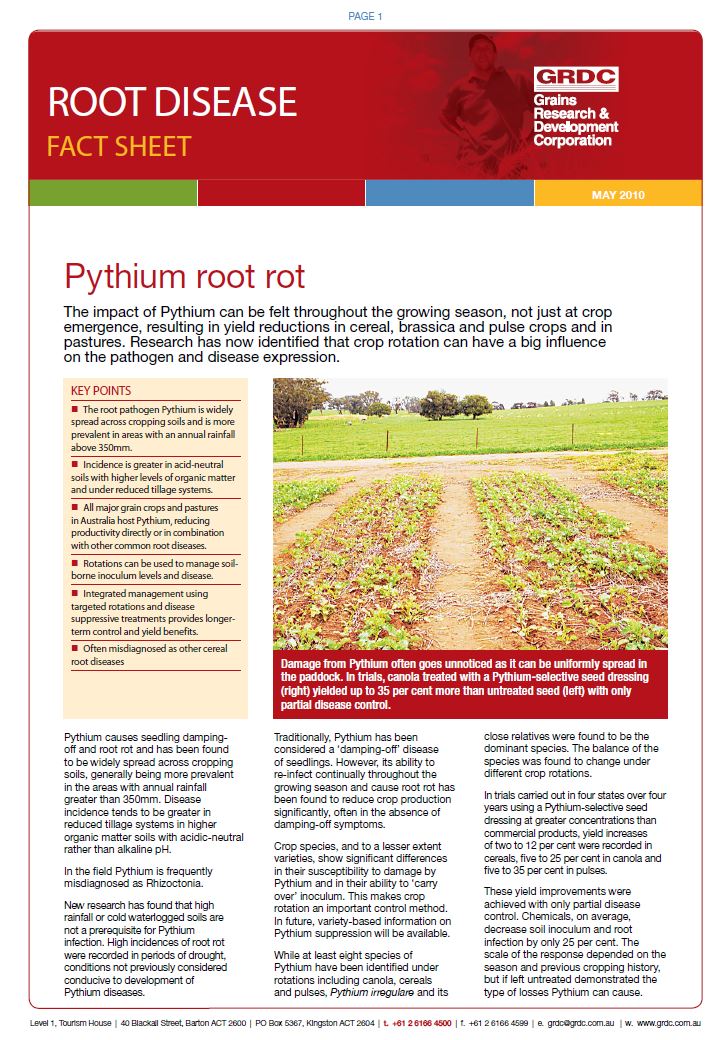Pythium Root Rot
Published: 3 May 2010

Root Disease- Pythium Root Rot
The impact of Pythium can be felt throughout the growing season, not just at crop emergence, resulting in yield reductions in cereal, brassica and pulse crops and in pastures. Research has now identified that crop rotation can have a big influence on the pathogen and disease expression.
Key Points:
- The root pathogen Pythium is widely spread across cropping soils and is more prevalent in areas with an annual rainfall above 350mm.
- Incidence is greater in acid-neutral soils with higher levels of organic matter and under reduced tillage systems.
- All major grain crops and pastures in Australia host Pythium, reducing productivity directly or in combination with other common root diseases.
- Rotations can be used to manage soilborne inoculum levels and disease.
- Integrated management using targeted rotations and disease suppressive treatments provides longerterm control and yield benefits.
- Often misdiagnosed as other cereal root diseases.
Want to link to this publication?
Use www.grdc.com.au/GRDC-FS-PythiumRootRot to ensure your link is up-to-date
Region: North; South; West
Was this page helpful?
YOUR FEEDBACK
To protect your privacy, please do not include contact information in your feedback. If you would like
a response, please contact us.
